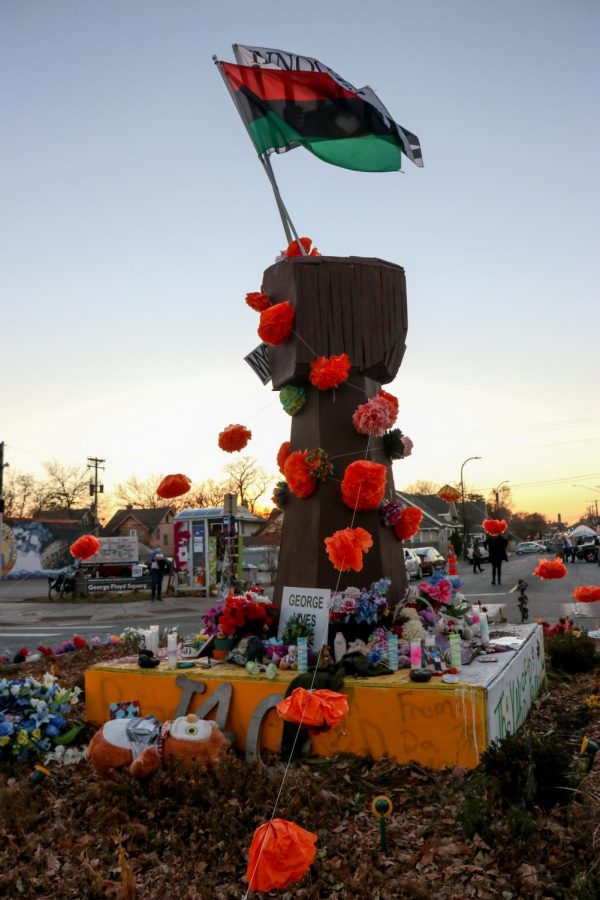Minneapolis Mayor Jacob Frey and Interim Minneapolis Police Chief Amelia Huffman announced in a press conference on June 13 changes to the disciplinary and wellness policy for the Minneapolis Police Department (MPD), as an attempt to improve accountability and transparency.
While some local activists see the reforms as positive steps toward ending police brutality against people of color, others are skeptical they will make a difference.
The reforms and policy changes come after the Minnesota Department of Human Rights released the results of their investigation into MPD on April 27. The Department found that MPD engages in a pattern of race discrimination caused by an organizational culture of flawed training, deficient accountability systems and a lack of collective action from MPD and City of Minneapolis leadership.
The reforms include setting a maximum of 74 hours that police officers can work each week and clarifying levels of discipline for specific policy violations.
Reactions to disciplinary updates are mixed
Updates to the levels of discipline went into effect June 1, with policy violations categorized in five discipline levels classified in a matrix from A to E. The offenses and their assigned disciplinary action increase in seriousness with each level.
According to the discipline matrix, A-level violations result in “non-disciplinary corrective action,” like coaching, and apply to violations such as failure to appear in court and failure to properly inspect one’s vehicle.
E-level violations, which result in the officer’s termination, include acts of bias or discrimination and unnecessary use of force likely to cause serious injury or death. This specific outline of violations and the discipline to be enforced for each is meant to improve accountability for officers who cause harm, according to the City of Minneapolis’ June 13 press release.
Toshira Garraway Allen, founder of Families Supporting Families Against Police Violence, said the updates to the discipline matrix represent positive change by outlining the consequences for unacceptable behavior on the part of officers.
“How else are you going to let [officers] know that this is not okay?” Garraway Allen said. “We have to do something to go forward, and the right thing to do is to remove people who are hurting others.”
Jae Yates, an activist from Twin Cities Coalition for Justice 4 Jamar said they were not as hopeful about the new measures.
“This is another example of the mayor’s office trying to placate people,” Yates said. “It sounds like this is not going to be enforced.”
Ward 3 Council Member Michael Rainville did not share this concern. He said when the new police chief is hired, they will be a “miracle worker.”
Trahern Crews, founder of Black Lives Matter Minnesota, said the changes represent a “baby step in the right direction” for police accountability, but he is concerned with the clarity of the levels of discipline outlined.
“I think the grading thing needs to be more clear and understood so that community members, activists and police all understand if you do this, this is what’s going to happen,” Crews said.
Department of Human Rights calls for organizational change
The Minnesota Department of Human Rights presented the results of their investigation of the MPD’s conduct, which started June 1, 2020 and was completed April 27, in front of Minneapolis City Council’s Committee of the Whole June 14. During the meeting, Department Commissioner Rebecca Lucero said supervisors approve “inappropriate and potentially unlawful behavior” of officers.
Lucero said during the meeting that in one instance, an officer hit a 14-year-old Black child with a flashlight and put him into an unconscious neck restraint because he didn’t “stand up fast enough” after the officer told him to stand up from the ground, where he was playing on his cell phone. The officer’s supervisor approved this behavior, Lucero said, so the officer was not punished.
Crews said the Department of Human Rights’ findings were “astounding,” and it felt good to have the knowledge and experiences of residents of color verified.
Yates said they were frustrated with how long it has taken city government officials to notice the problems laid out in the report.
“It’s frustrating that it takes a human rights report to realize the police force is racist,” Yates said.
Rainville said the Department of Human Rights’ report, along with the United States Department of Justice (DOJ) investigation into MPD that is currently underway, will show the city where to go next with police reform and “make everyone safer.” The two investigations will lead to the creation of at least one consent decree, which is a court-enforceable document that identifies changes that need to be made and timelines for them.
“The DOJ is doing a much deeper dive [than the Department of Human Rights],” Rainville said. “We’ve turned a corner here.”
Lucero declined an interview with the Minnesota Daily, but in an email to the Minnesota Daily, pointed out that during their investigation, officers repeatedly expressed a desire for additional mental health and wellness support.
This type of support was announced along with the disciplinary updates, as the city is now pursuing trauma-informed mental health services for officers and will also create a health and wellness manager position, who will be expected to create a “robust wellness program” for MPD staff.
Officers can no longer work more than 16 consecutive hours, must take at least eight consecutive hours off for every 24 hours worked and have at least one 24-hour day off from work each week. During the June 13 press conference, Chief Huffman said these limits will affect a “relatively small group of officers.”
“Our folks need to be at their best when they come to work,” Huffman said during the press conference. “And that means having adequate time to rest and recharge.”
Huffman also said during the press conference that MPD has “significant staffing challenges at this point,” which creates a need to balance supporting officers’ well-being and providing public safety services.






















